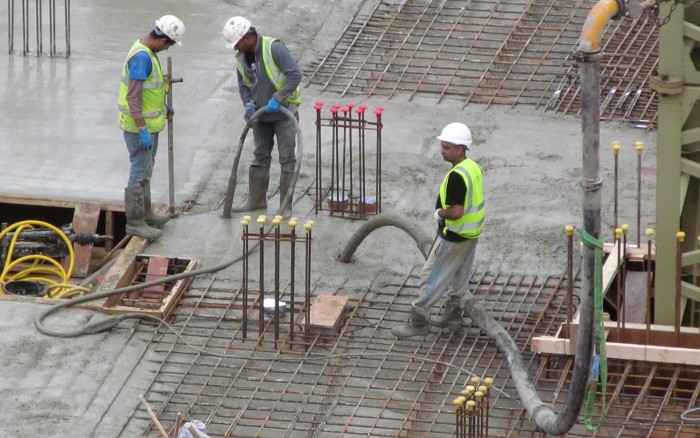Cement Isn’t As Terrible for the Climate As We Thought

If you’re making a building, you’re probably going to use cement—and that means contributing to global warming. But new research suggests it may not be so bad in the long run.
Creating cement is essentially a matter of superheating limestone and clays in a kiln until the mixture transforms and coughs out carbon dioxide. That actually makes it a double-barreled greenhouse gas emitter: both the process itself and the fuel burned to heat the kiln emit loads of carbon dioxide.
And humanity loves its cement—last year we made about 4.1 billion tons of it for use in concrete and mortar. The emissions that went with that production were good for about 5 percent of all the man-made carbon pumped into the atmosphere.
But a new study in Nature Geoscience says that once a building is built (and even after it’s been torn down) the mortar, concrete, or rubble soaks back up a fair amount of carbon dioxide through chemical reactions with air and water. In all, the study suggests that this carbon sponge effect may account for as much as 43 percent of what was emitted in the first place.
That’s not going to get cement off the hook for contributing to global warming, of course. But a write-up about the study in Science says that the finding could inform how we go about reducing the cement industry’s carbon footprint. We don’t need to worry quite so much about the materials that go into cement, it suggests, since it turns out that they gather back up much of the carbon they emit. Instead, it would be better to focus on figuring out how to heat cement kilns with something other than fossil fuels.
(Read more: Science, “Trump’s Empty Promise to Coal Country,” “Carbon Dioxide Emissions Keep Falling in the U.S.”)
Keep Reading
Most Popular
Large language models can do jaw-dropping things. But nobody knows exactly why.
And that's a problem. Figuring it out is one of the biggest scientific puzzles of our time and a crucial step towards controlling more powerful future models.
How scientists traced a mysterious covid case back to six toilets
When wastewater surveillance turns into a hunt for a single infected individual, the ethics get tricky.
The problem with plug-in hybrids? Their drivers.
Plug-in hybrids are often sold as a transition to EVs, but new data from Europe shows we’re still underestimating the emissions they produce.
Stay connected
Get the latest updates from
MIT Technology Review
Discover special offers, top stories, upcoming events, and more.